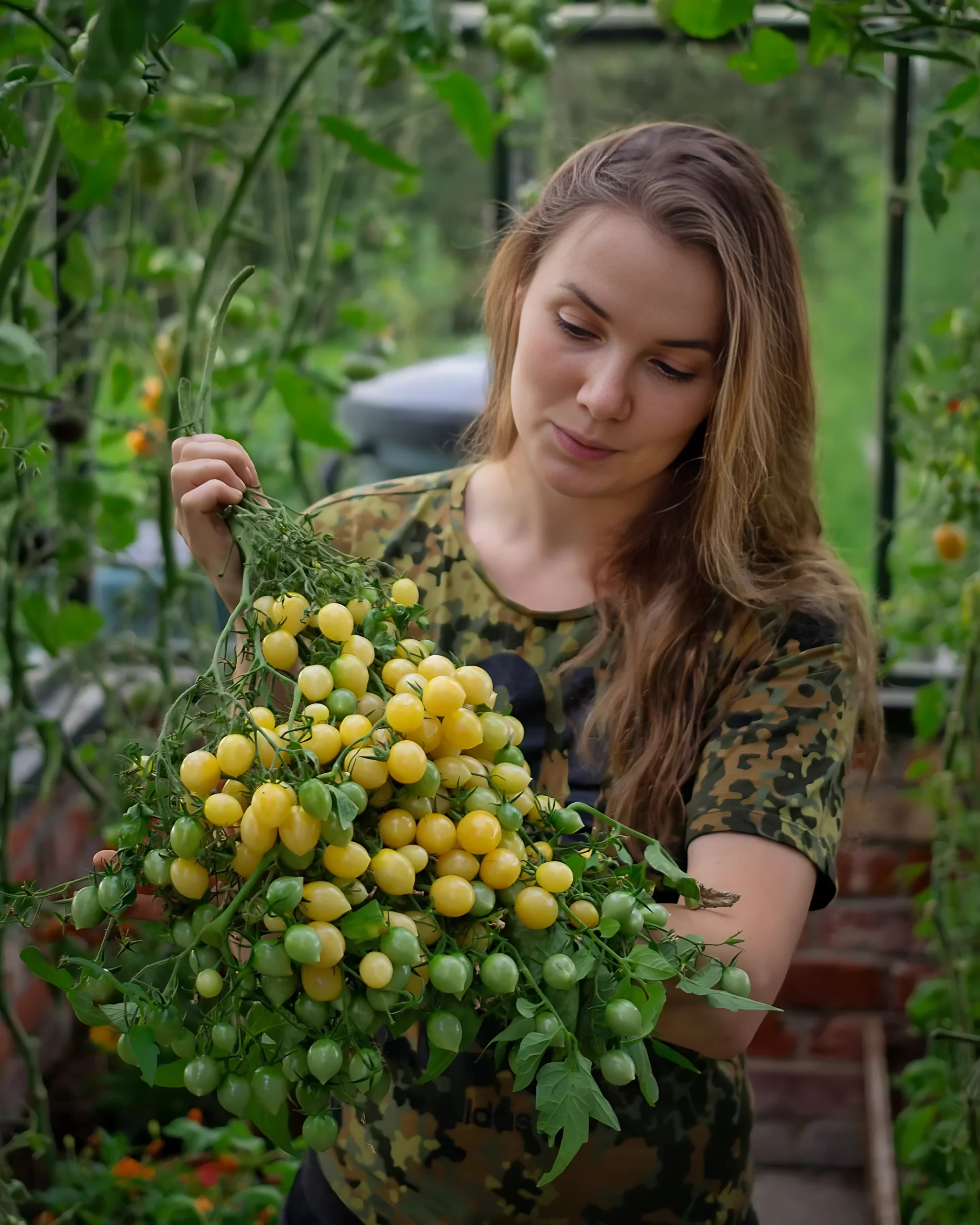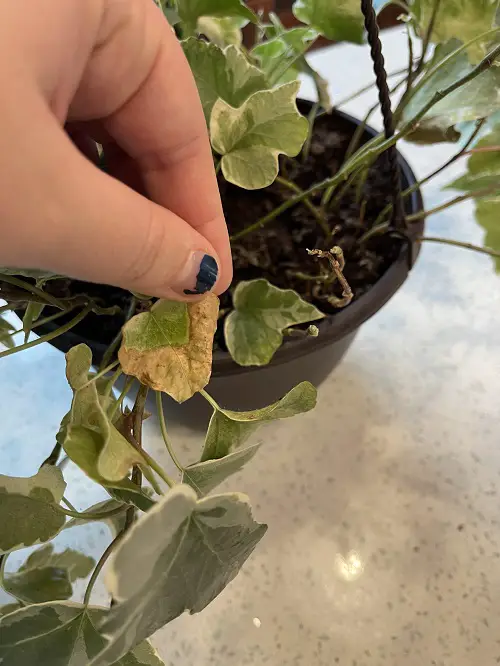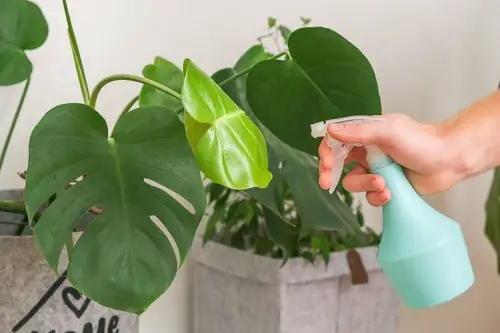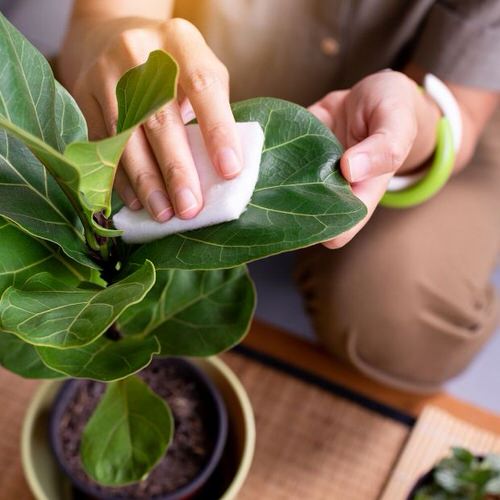Get Rid of Aphids on Indoor Plants safely without resorting to harsh chemicals indoors.
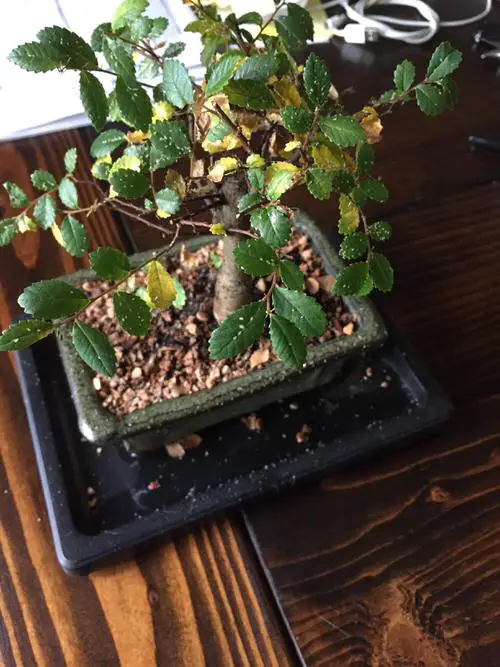
When searching for ways to Get Rid of Aphids on Indoor Plants, it’s important to look for more natural and chemical-free ideas.
How to Get Rid of Aphids on Indoor Plants?
1. Isolate the Infected Plant

The first step in dealing with aphids is to isolate the affected houseplant. Aphids can rapidly infest other plants, so this step is key in containing the problem.
2. Inspect Your Plants Regularly
Keep a watchful eye on your indoor plants. Regularly inspect the leaves and stems for any signs of aphids, and look for tiny bumps like soft-bodied insects and sticky residue called honeydew. Catching an infestation early can significantly reduce the spread and impact.
3. Prune and Remove Minor Infestations
For a minor infestation, you can carefully prune the affected parts of the plant and dispose of them properly. This will reduce the overall aphid population and their breeding plant parts.
4. Use a Soapy Water Solution
A simple and safe remedy is to create a soapy water solution. Mix a few drops of mild liquid soap with water and spray it on the aphid-infested houseplants. The soapy water solution breaks down the waxy exterior of aphids, effectively dehydrating and killing them.
Rinse the plant thoroughly with clean water after a few hours to avoid any soap residue on the leaves.
5. Apply Neem Oil Spray
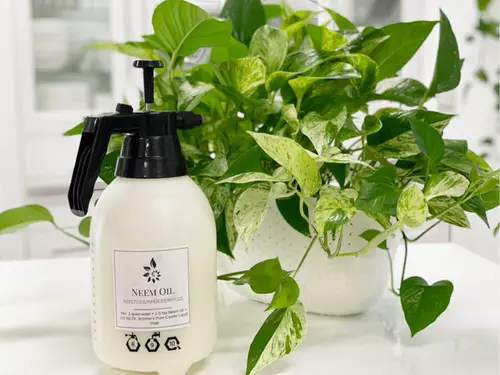
Neem oil acts as an anti-feedant and growth disruptor for aphids, making it an effective long-term solution. It interferes with the aphid’s hormonal system, preventing them from growing and reproducing.
Dilute neem oil according to the instructions on the bottle and spray it on the affected areas for effective pest removal.
18 Plants That Naturally Repel Aphids
6. Use Market-Based Insecticidal Soap Solution
You can also purchase insecticidal soap from a garden center, which is safe for indoor use. It works like a soapy water solution penetrating the aphids’ outer shell and disrupting their cell membranes, leading to dehydration and death.
Follow the instructions on the product label to apply it to your plants.
7. Prune Overlapping Foliage
Trim excess foliage that may be blocking air circulation around your plants. Improved airflow can reduce aphids and prevent them from settling in.
8. Use Garlic or Onion Spray
The strong scent of garlic and onion is a natural deterrent for aphids. It masks the scent of the plants, making it harder for aphids to locate their food source.
Create a homemade spray by blending garlic or onion with water and then straining the liquid. Dilute it further with water in a 1:1 ratio and use it as a natural aphid repellent on your indoor plants.
25 Natural Ways to Kill Aphids
9. Keep Your Plants Healthy
Healthy and strong plants are less likely to succumb to aphid infestations. Ensure your indoor plants receive adequate light, water, and nutrients to boost their resistance.
10. Maintain a Clutter-free Space
Maintain a clean and clutter-free indoor gardening area. This minimizes hiding spots for aphids and makes it easier to spot and address any issues.
11. Prevent Future Infestations with Essential Oils
To prevent aphids from returning, you can periodically spray your plants with water and a few drops of essential oils like lavender or peppermint. Aphids dislike these scents.
11 Best Essential Oils for Gardening and How to Use Them
12. Use Sticky Traps
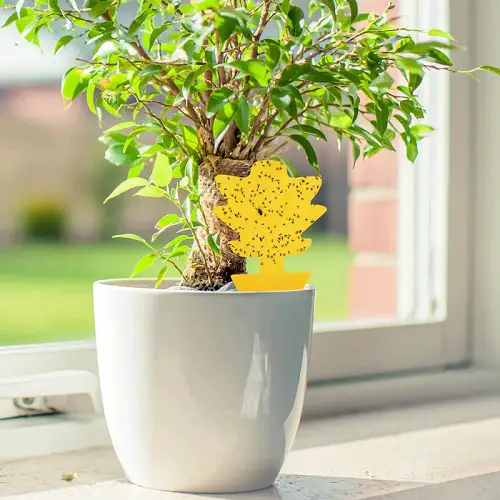
Use yellow sticky traps, which can be placed near your plants. Aphids are attracted to the color and will get stuck in the traps.
Check out our article on how to get rid of flies here
13. Gently Wipe Aphids from Plant Leaves
In cases of minor aphid infestations, you can manually wipe them off your plant foliage. Dampen a sponge or a soft cotton cloth in a solution of water and gently wipe the affected leaves to dislodge and remove the aphids.
14. Always Quarantine Your New Plants
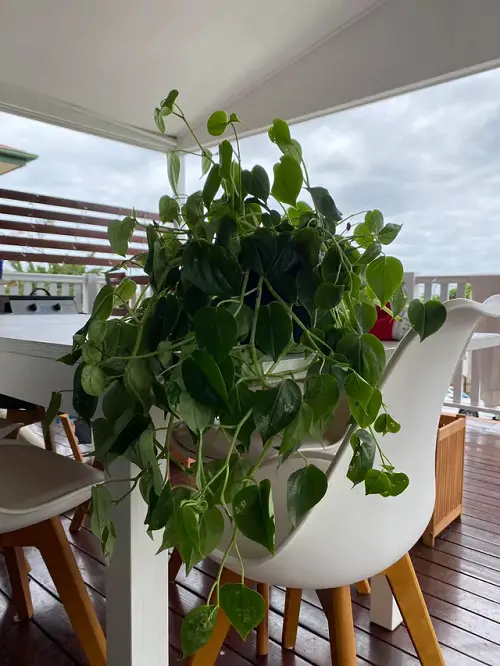
Whenever you introduce a new plant to your indoor garden, quarantine it for a while to ensure it is aphid-free before placing it near other plants. This will bar off any chances of external aphid infestation on the plants.
15. Use Water to Ward them Off
One of the simplest and non-invasive methods to get rid of aphids on indoor plants is by using a strong jet of water. With a hose attachment or by keeping the plant under running water–carefully target the stream of water at the aphid infestation to dislodge them effectively.
This physically removes the pest and disrupts their feeding patterns. Repeat this process regularly until the aphids are removed. Be cautious not to use excessive water pressure, which may damage the delicate leaves.
16. Apply Rubbing Alcohol
Rubbing alcohol is an effective and safe remedy for treating aphid-infested indoor plants. Dilute rubbing alcohol with water in a 1:3 ratio with water and gently spray it on the affected areas.
The alcohol helps to dehydrate and kill the aphids. Be sure to avoid using alcohol on plants that are sensitive to it, and always test a small area before treating the entire plant. Rinse the plant with clean water after a few hours to prevent any potential damage.
17. Discard Infested Plants
If the aphid infestation is severe and concentrated on specific parts of your plant, you may need to take more drastic measures. Carefully trim and remove the heavily infested leaves, stems, or branches.
Bag and dispose of these plant parts to prevent the aphids from spreading further. Ensure that you sterilize your pruning tools between cuts to prevent contamination.

